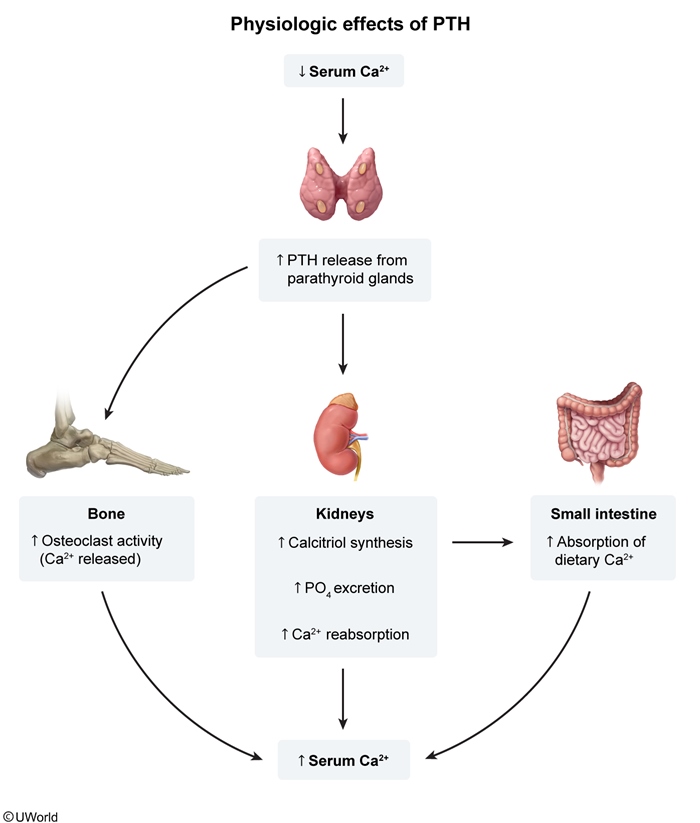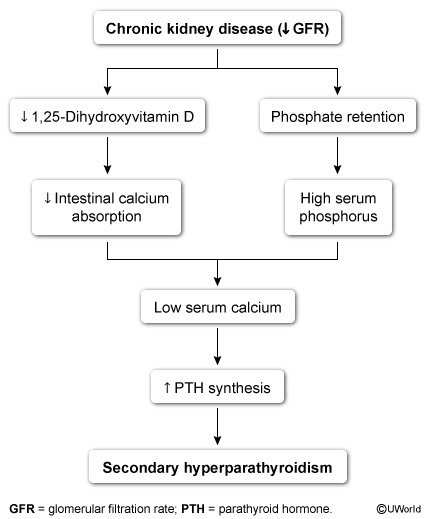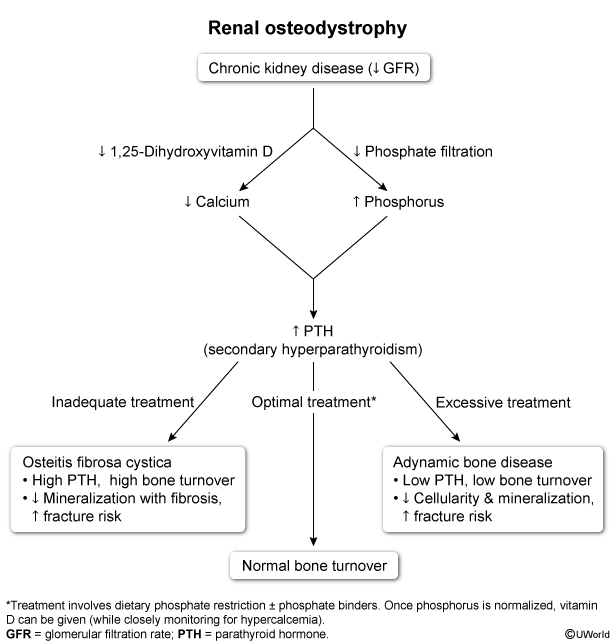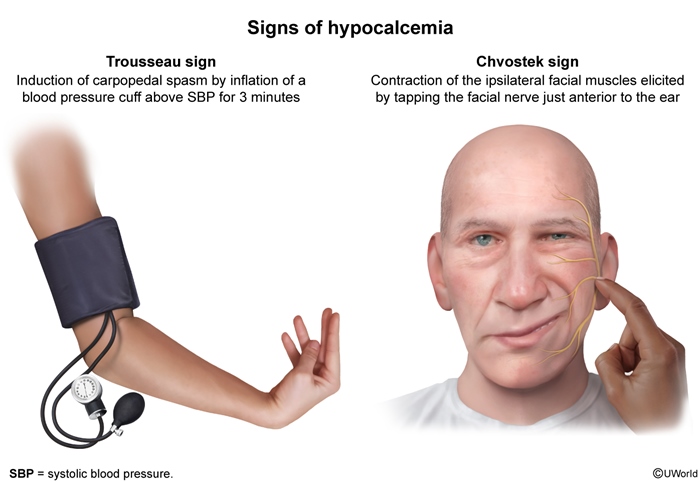Parathyroid Disorders: Hyperparathyroidism And Hypoparathyroidism
Article Sections
Introduction
The parathyroid glands play a crucial role in calcium homeostasis through the production of parathyroid hormone (PTH). Typically, there are 4 parathyroid glands located posterior to the thyroid gland. PTH acts to increase serum calcium levels by promoting bone resorption, enhancing renal calcium reabsorption, and stimulating the production of active vitamin D (calcitriol) in the kidneys. Disorders of the parathyroid glands can lead to either excessive PTH production (hyperparathyroidism)–which can be either primary, secondary, or tertiary in origin and is the main focus of this article–or to insufficient PTH production (hypoparathyroidism), which is less common.
Pathophysiology
PTH secretion is tightly regulated by the calcium-sensing receptor (CaSR) on parathyroid cells, which detects small changes in serum calcium levels. When serum calcium levels fall, PTH secretion increases; when serum calcium levels rise, PTH secretion is suppressed. This feedback loop maintains serum calcium within a narrow range (8.5-10.5 mg/dL).
Continue Learning with UWorld
Get the full Parathyroid Disorders: Hyperparathyroidism And Hypoparathyroidism article plus rich visuals, real-world cases, and in-depth insights from medical experts, all available through the UWorld Medical Library.
Figures



